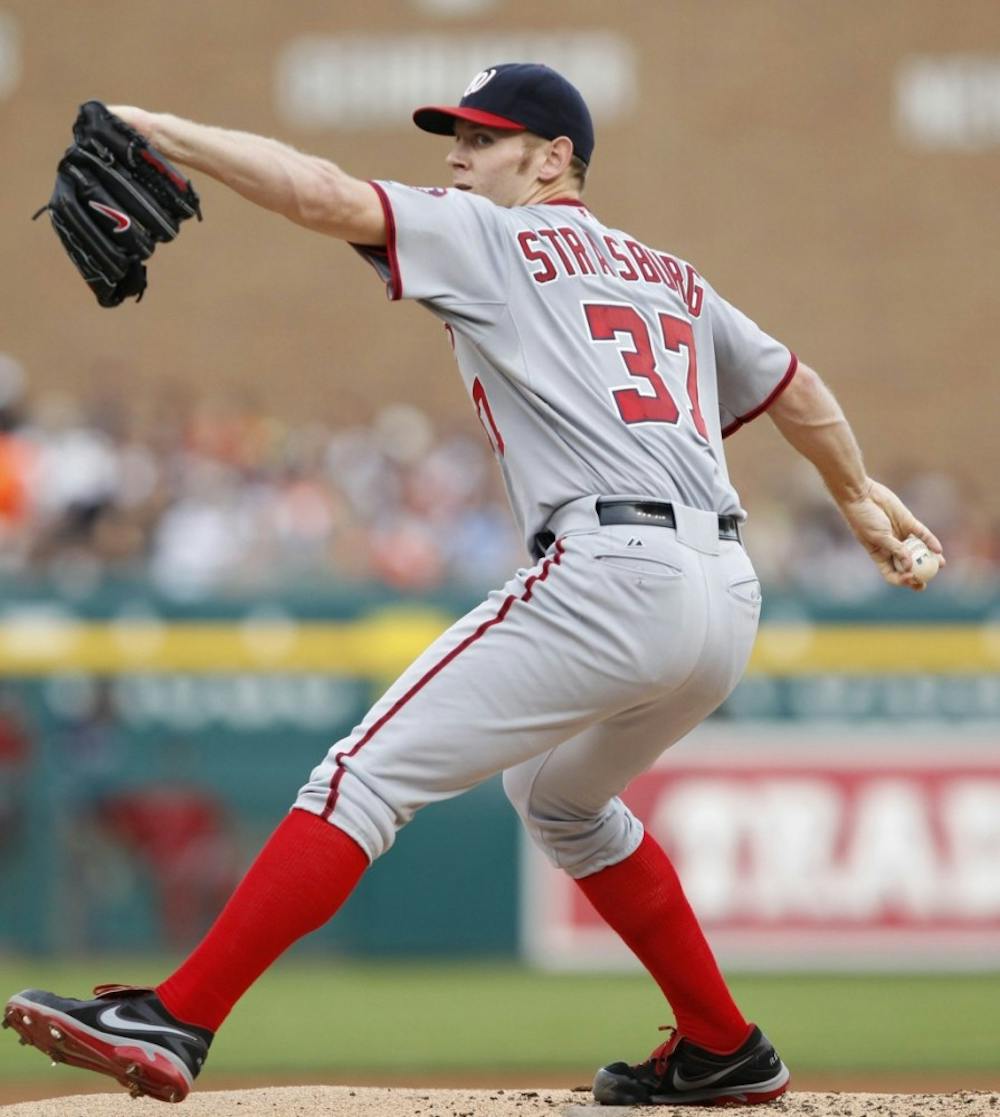The 2013 season was a massive disappointment for the Washington Nationals. After all, the team projected to win the World Series did not even qualify for the Major League Baseball postseason. All year long, injuries (and the lack of production from Dan Haren) plagued the pitching staff and strongly inhibited the team’s progress.
The Nationals knew they needed to make a splash in the offseason. As a massive Nationals fan, I didn’t expect it to be such a bargain. Washington traded utility man/pinch-hit extraordinaire Steve Lombardozzi, relief pitcher Ian Krol and minor league starting pitcher Robbie Ray to the Detroit Tigers for veteran starter Doug Fister.
For one, Fister is a proven winner. In five major league seasons, he has a career ERA of 3.53, and a strikeout-to-walk ratio of 3.46. As a ground-ball heavy pitcher, he should thrive with the Nationals solid defensive infield behind him. In 2013, Fister threw 208.2 innings, so he gives the Nationals mileage for an entire season. Fister also has made seven career postseason starts with an October ERA of 2.98. Combine that with the fact that Fister will be the Nationals’ No. 4 starter behind Stephen Strasburg, Gio Gonzalez and Jordan Zimmermann and the deal already looks to favor Washington.
Now, consider who the Nationals gave up. Lombardozzi, a utility man who has had numerous stretches of starting at either second base, third base or left field, carries a career .264 batting average. An average defender, Lombardozzi has been surpassed by Anthony Rendon as the Nationals’ starting second baseman and it became very apparent that he was not in the Nationals’ long-term plans. Despite being a fan favorite, Lombardozzi’s time was up in Washington, and he might be able to contribute in Detroit.
Krol burst onto the scene in June 2013, striking out batters with ease on his overpowering left-handed fastball. As time went along, the league began to catch up with Krol, and he finished the year with a 3.95 ERA in 27.1 innings. In my opinion, Krol is the biggest loss for Washington in this trade. He could turn out to be a great major league closer someday, or at least a left-handed relief specialist.
As for Ray, the Nationals’ 12th round pick in 2010 (the Bryce Harper draft), a 3.36 combined ERA in Class A+ and Class AA this season has him poised to become one of the Tigers’ potential future pieces. The key in that description is future, and future does not mean 2014, or even 2015 for that matter. Fister will help the Nationals now, but the Tigers will not truly reap the full benefits of this trade for a few years.
Fister still has two more years on his contract, so the Nationals’ pitching staff is now under full control through 2015. In addition to that fact, this was a trade, so the Nationals got their starter without paying a huge price (such as Dan Haren’s $13 million last year) in free agency. The team still has money to spend on left-handed relief pitching or possibly even New York Yankees free agent second baseman Robinson Cano.
The Nationals are shaping up for an attempt to redeem themselves from the debacle that was 2013 and a potential deep playoff run in 2014. If the Nats find themselves in the World Series next fall, there is a distinct chance fans and media alike will point to this trade a major reason why.


